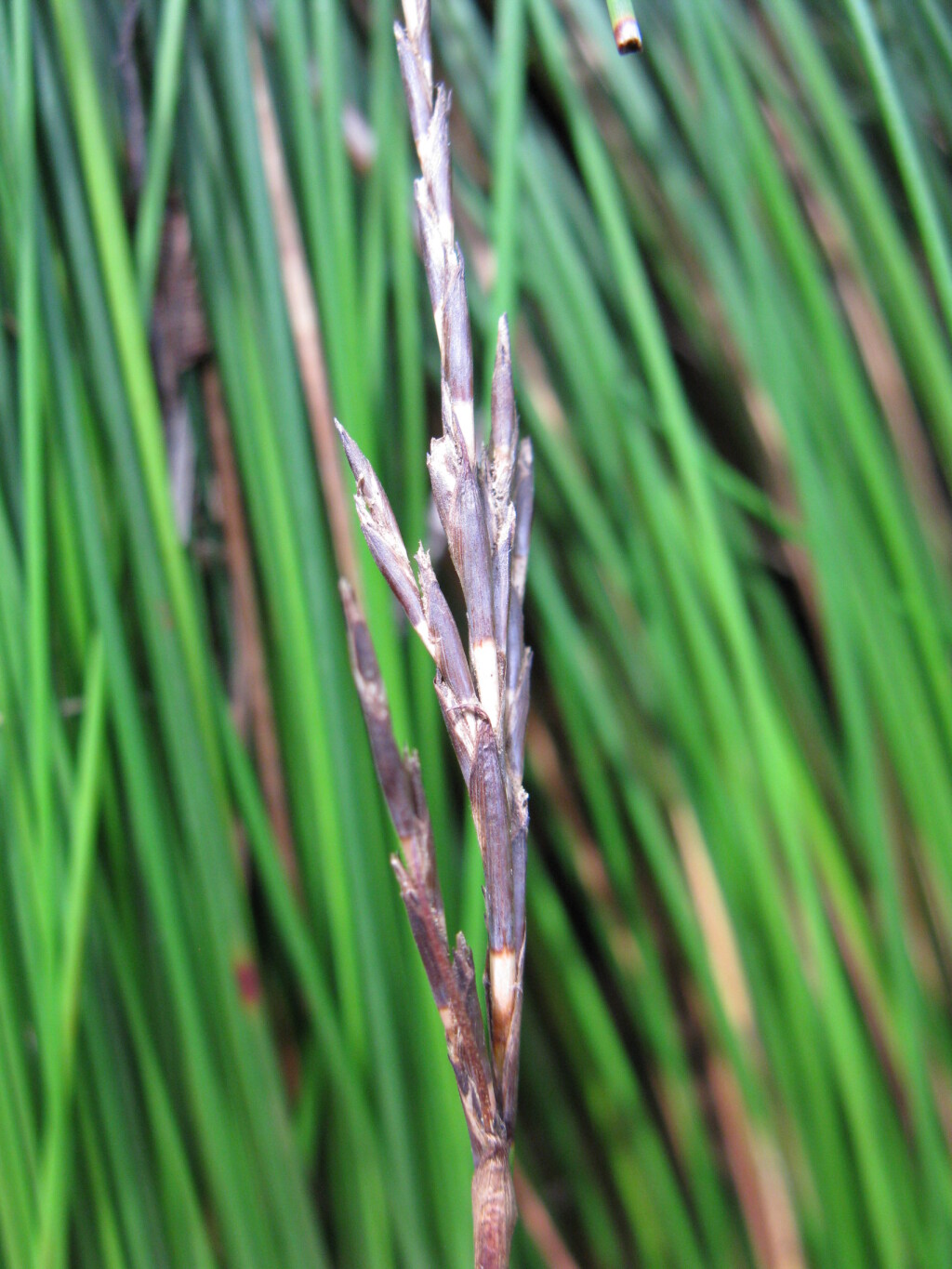Lepidosperma urophorum
N.A.Wakef. Tailed Rapier-sedgeTufted perennial with very short rhizome. Culms erect or arched, terete or often shallowly concave on one side or obscurely trigonous, striate, glabrous, smooth, 60–150 cm high, 0.8–1.8 mm diam. Leaf-blades usually reduced, to 2 cm long, or similar in form to culms but shorter, less than 1 mm diam.; sheaths blackish to very dark red-brown (culms often reddish near base), not viscid, ± dull. Inflorescence fan-shaped or linear in outline, consisting of 1 to several slender spikes, 3–8 cm long, 0.5–2 cm diam.; involucral bract shorter than inflorescence. Spikelets rather few, 5–7 mm long; glumes 4 or 5, puberulous to glabrous, grey-brown to red-brown, the 2 lowest empty, slightly shorter than fertile glumes, obtuse to acute, mucronate; fertile glumes 4–5.5 mm long, acute, mucronate; hypogynous scales 6, yellowish, from one-third to one-half length of nut. Nut narrow-ellipsoid to ovoid, pale brown to dark greyish, wrinkled to smooth, 3.0–4.0 mm long, 1.5–2.3 mm diam Flowers spring–summer.
EGL, EGU, HSF, Strz, MonT, HFE. Also NSW. Usually in rocky sites, with coarse, sandy soils, near streams or in elevated, rather dry forests. Locally abundant in the far east, with a few isolated occurrences to as far west as the Gembrook-Beenak area.
Wilson, K.L. (1994). Cyperaceae. In: Walsh, N.G.; Entwisle, T.J., Flora of Victoria Vol. 2, Ferns and Allied Plants, Conifers and Monocotyledons, pp. 238–356. Inkata Press, Melbourne.
 Spinning
Spinning
